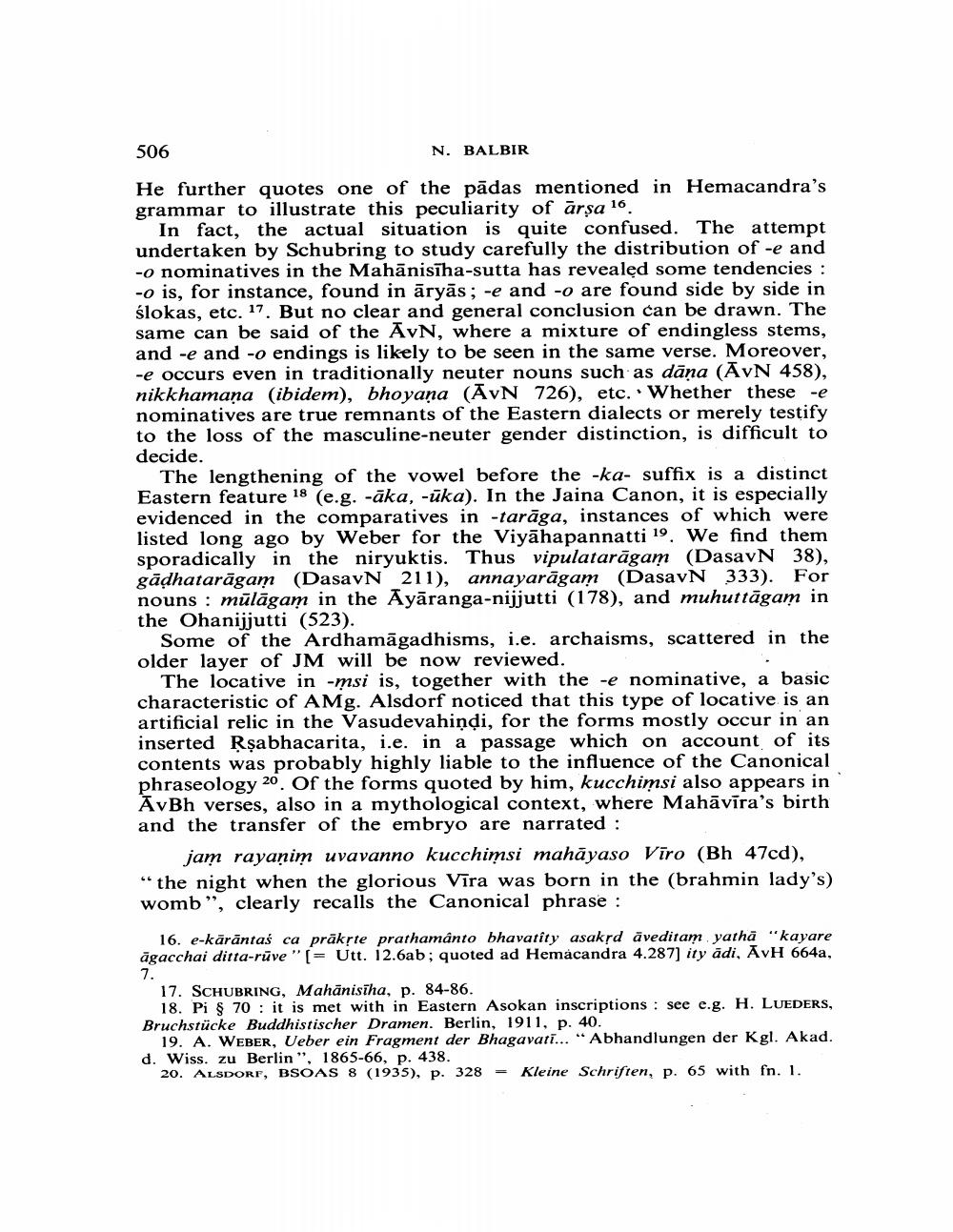Book Title: Morphological Evidence For Dialectal Variety In Jaina Maharastri Author(s): Nalini Balbir Publisher: Nalini Balbir View full book textPage 4
________________ 506 N. BALBIR He further quotes one of the pādas mentioned in Hemacandra's grammar to illustrate this peculiarity of arsa 10. In fact, the actual situation is quite confused. The attempt. undertaken by Schubring to study carefully the distribution of -e and -o nominatives in the Mahānisīha-sutta has revealed some tendencies : -o is, for instance, found in aryās; -e and -o are found side by side in ślokas, etc. 17. But no clear and general conclusion can be drawn. The same can be said of the AvN, where a mixture of endingless stems, and -e and -o endings is likely to be seen in the same verse. Moreover, -e occurs even in traditionally neuter nouns such as dāņa (AvN 458), nikkhamana (ibidem), bhoyana (AvN 726), etc. Whether these e nominatives are true remnants of the Eastern dialects or merely testify to the loss of the masculine-neuter gender distinction, is difficult to decide. The lengthening of the vowel before the -ka- suffix is a distinct Eastern feature 18 (e.g. -āka, -uka). In the Jaina Canon, it is especially evidenced in the comparatives in -taräga, instances of which were listed long ago by Weber for the Viyahapannatti 19. We find them. sporadically in the niryuktis. Thus vipulatarāgam (DasavN 38). gadhataragam (DasavN 211), annayaragam (DasavN 333). For nouns mülägam in the Ayäranga-nijjutti (178), and muhuttagam in the Ohanijjutti (523). Some of the Ardhamāgadhisms, i.e. archaisms, scattered in the older layer of JM will be now reviewed. The locative in msi is, together with the -e nominative, a basic characteristic of AMg. Alsdorf noticed that this type of locative is an artificial relic in the Vasudevahindi, for the forms mostly occur in an inserted Rṣabhacarita, i.e. in a passage which on account of its contents was probably highly liable to the influence of the Canonical phraseology 26, Of the forms quoted by him, kucchimsi also appears in AvBh verses, also in a mythological context, where Mahāvīra's birth and the transfer of the embryo are narrated : jam rayanim uvavanno kucchimsi mahāyaso Viro (Bh 47cd). "the night when the glorious Vira was born in the (brahmin lady's) womb", clearly recalls the Canonical phrase: 16. e-käräntas ca prakṛte prathamânto bhavatity asakṛd aveditam yatha "kayare agacchai ditta-rūve "[= Utt. 12.6ab; quoted ad Hemacandra 4.287] ity ādi, AvH 664a, 7. 17. SCHUBRING, Mahānisīha, p. 84-86. 18. Pi § 70 it is met with in Eastern Asokan inscriptions see e.g. H. LUEDERS, Bruchstücke Buddhistischer Dramen. Berlin, 1911, p. 40. 19. A. WEBER, Ueber ein Fragment der Bhagavati... "Abhandlungen der Kgl. Akad. d. Wiss. zu Berlin", 1865-66, p. 438. 20. ALSDORF, BSOAS 8 (1935), p. 328 Kleine Schriften, p. 65 with fn. 1.Page Navigation
1 2 3 4 5 6 7 8 9 10 11 12 13 14 15 16 17 18 19 20 21 22 23
